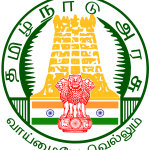NATIONAL
Karbi Anglong Agreement
ª A tripartite agreement among five insurgent groups of Assam, the Centre and the State government was signed recently to end years of violence in the Karbi Anglong region. The insurgent groups which signed the peace accord include Karbi Longri North Cachar Hills Liberation Front, People’s Democratic Council of Karbi Longri, United People’s Liberation Army and Karbi People’s Liberation Tigers factions.
ª Under the peace accord, more than 1,000 armed cadres have abjured violence and joined the mainstream. The agreement provides for their rehabilitation. The Centre will make available a special development package of ₹1,000 crore over the next five years, for the Assam government to undertake specific projects for the development of Karbi areas.
ª The memorandum of settlement would ensure greater devolution of autonomy to the Karbi Anglong Autonomous Council (KAAC), protection of identity, language and culture of the Karbi people and focused development of the Council area, without affecting the territorial and administrative integrity of Assam, said the government.
ª Under the agreement, the Assam government will set up a Karbi Welfare Council for focused development of Karbi people living outside the KAAC area. The consolidated fund of the State will be augmented to supplement the resources of KAAC. “Overall, the present settlement proposes to give more legislative, executive, administrative and financial powers to KAAC,” it said.
ª BACKGROND: Located in central Assam, Karbi Anglong is the state’s largest district and a melting pot of ethnicities and tribal groups — Karbi, Dimasa, Bodo, Kuki, Hmar, Tiwa, Garo, Man (Tai speakers), Rengma Naga. Its diversity also spawned different outfits and fuelled an insurgency that did not allow the region to develop. This agreement hopes to put that in the past.
ª The Karbi have been demanding a separate state since 1946. Later, their movement took the shape of an insurgency which intensified in the 1990s. The Centre signed various ceasefire agreements with different groups but there were always breakaway factions that continued armed struggle.
INTERNATIONAL
Eastern Economic Forum 2021
ª Prime Minister Narendra Modi delivered a video-address during the plenary session of the 6th Eastern Economic Forum (EEF) held on 3rd September 2021 in Vladivostok. It may be recalled that PM was the Chief Guest for the 5th EEF in 2019, the first by an Indian Prime Minister.
ª Applauding President Putin’s vision for the development of the Russian Far East, PM reiterated India’s commitment as part of its “Act East Policy’ of being a reliable partner of Russia in this regard. He underlined the natural complementarities of India and Russia in the development of Russian Far East.
ª PM stressed on the importance of greater economic and commercial engagement between the two sides in line with the ‘Special and Privileged Strategic Partnership’. He highlighted the importance of health and pharma sectors as important areas of cooperation that have emerged during the pandemic. He also referred to other potential areas of economic cooperation including diamond, coking coal, steel, timber etc.
ª The EEF was established by a decree of the President of the Russian Federation, Vladimir Putin, in 2015, with the aim of supporting the economic development of Russia’s Far East, and to expand international cooperation in the Asia-Pacific region.
DEFENCE
1) ‘SIMBEX’: SINGAPORE-INDIA MARITIME BILATERAL EXERCISE
ª India and Singapore have carried out a mega naval wargame in the southern fringes of the South China Sea recently, in reflection of their growing congruence of interests in the strategically key region. The Indian Navy deployed its guided-missile destroyer INS Ranvijay, anti-submarine warfare corvette INS Kiltan and guided-missile corvette INS Kora and one P8I long-range maritime patrol aircraft for the ‘SIMBEX’ exercise.
ª The Singapore Navy was represented by formidable class frigate RSS Steadfast, victory class missile corvette RSS Vigour, one Archer class submarine and one Fokker-50 maritime patrol aircraft. Four F-16 fighter aircraft of the Republic of Singapore Air Force (RSAF) also participated in the exercise during the air defence drills.
ª It was the 28th edition of the Singapore-India Maritime Bilateral Exercise (SIMBEX). Initiated in 1994, SIMBEX is the Indian Navy’s longest uninterrupted bilateral maritime exercise with any foreign navy. Sustaining the continuity of this significant engagement despite the challenges of the ongoing pandemic further underscores the strength of bilateral defence ties between both countries.
ª India-Singapore Defence relations remain a very significant aspect of the overall bilateral relationship and cover a very wide spectrum of collaboration from conventional military-to-military exchanges to HADR and cyber security. Both navies have a representation in each other’s Maritime Information Fusion Centres and have also recently signed an agreement on mutual submarine rescue support and coordination.
2) ‘AUSINDEX’ 2021
ª Indian Navy Task Group comprising IN Ships Shivalik and Kadmatt, participated in the 4th edition of AUSINDEX. Royal Australian Navy (RAN) Anzac Class Frigate, HMAS Warramunga which participated in Exercise MALABAR along with the IN units is also part of the exercise.
ª Australia’s Northern Territory hosted the biennial AUSINDEX maritime warfare exercises between the Royal Australian and the Indian navies.This edition of AUSINDEX includes complex surface, sub-surface and air operations between ships, submarines, helicopters and Long Range Maritime Patrol Aircraft of the participating Navies.
ª The participating Indian Naval Ships Shivalik and Kadmatt are the latest indigenously designed and built Guided Missile Stealth Frigate and Anti-Submarine Corvette respectively. They form part of the Indian Navy’s Eastern Fleet based at Visakhapatnam under the Eastern Naval Command.
ª Commenced in 2015 as a bilateral IN-RAN maritime exercise, AUSINDEX has grown in complexity over the years and the 3rd edition of the exercise, held in 2019 in the Bay of Bengal, included anti-submarine drills for the first time.
SCIENCE AND TECHNOLOGY
Pollen Calendar
ª By studying airborne pollen and its seasonal variations for about two years, researchers from the Post Graduate Institute of Medical Education and Research (PGIMER) and Panjab University have created a pollen calendar for Chandigarh, arguably the first for any city in India.
ª Titled, ‘Pollen calendar to depict seasonal periodicities of airborne pollen species in a city situated in Indo-Gangetic plain, India’, the study was recently published in the journal Atmospheric Environment.
ª About 20-30 per cent of the population suffers from allergic rhinitis/hay fever in India, and approximately 15 per cent develop asthma. Pollen is considered a major outdoor airborne allergen responsible for allergic rhinitis, asthma, and atopic dermatitis in humans.
ª Pollen calendars represent the time dynamics of airborne pollen taxa in graphical form in a particular geographical area. They yield readily accessible visual details about various airborne pollen taxa present throughout the year, with their seasonality in a single picture. Pollen calendars are location-specific with concentrations closely related to locally distributed flora.
ª A pollen calendar provides a clear understanding for clinicians, as well as people with allergies to identify the potential allergy triggers and help to limit their exposure during high pollen load season.
SPACE
Chandrayaan-2 completes 9,000 orbits around Moon
ª Two years after its lander, rover combination crash-landed on the far side of the moon, the Chandrayaan-2 mission is still delivering critical observations to India as it completes 9,000 orbits around the Moon. The Indian Space & Research Organisation (Isro) chairman K Sivan said that the spacecraft has completed 9,000 revolutions of the Moon and onboard instruments are functioning normally.
ª “Till date, Chandrayaan-2 has completed more than 9,000 orbits around the Moon,” said Sivan, who is also Secretary in the Department of Space (DoS). He added that the eight payloads onboard the Chandrayaan-2 spacecraft are conducting remote sensing and in-situ observations of the Moon at around 100 km altitude from the lunar surface.
ª “The science data are being made available for analysis by academia and institutes, for greater participation to bring out more science from the Chandrayaan-2 mission,” he further said. The latest announcement comes as the Indian space agency prepares for the Chandrayaan-3 mission that will use the orbiting spacecraft to communicate with Earth.
ª BACKGROUND: Chandrayaan-2 mission was the successor of its parent mission Chandrayaan-1 and consisted of an Orbiter, Lander and Rover with the goal of exploring the south pole of the Moon. The mission aimed at studying not just one area of the Moon but all the areas combining the exosphere, the surface as well as the sub-surface of the moon in a single mission.
ª It was launched on GSLV Mk-III, India’s most powerful launcher to date, on July 22, 2019, and reached the lunar orbit on August 20. The lander and rover were set to land on the far side of the Moon on September 6 after being separated from the orbiter. However, the missions did not go as planned when the combination crash-landed on the surface of the Moon.
ª While the lander and rover were lost in the accident, the orbiter continues operating in the lunar orbit to date providing key observations of the surface. ISRO has already said that it will use the orbiter for its Chandrayaan-3 mission likely to be launched in 2022.
ECONOMY
Kashmir willow bats to get GI tag
ª The Kashmir Willow cricket bats are famous across the world. Now, the government is in process of getting a GI (Geographical Indication) tag for Kashmiri Bats. As per a recent study, this will serve as a great marketing strategy for selling these bats in international markets. The GI tagging will also help in increasing the prices of the Kashmir willow bats.
ª A study released recently by the Finance Minister of India Nirmala Sitharaman named “Indian Sports Goods Industry: Strategies for Tapping the Export Potential” revealed that “Kashmir willow bat is one such product, which holds significance”. This is because it is made from some of the “best quality wood in the world”.
ª There are more than 200 bat making factories in Kashmir and hundreds of people earning their livelihoods. The willow wood, which goes by the scientific name of Salix alba var. caerulea.




